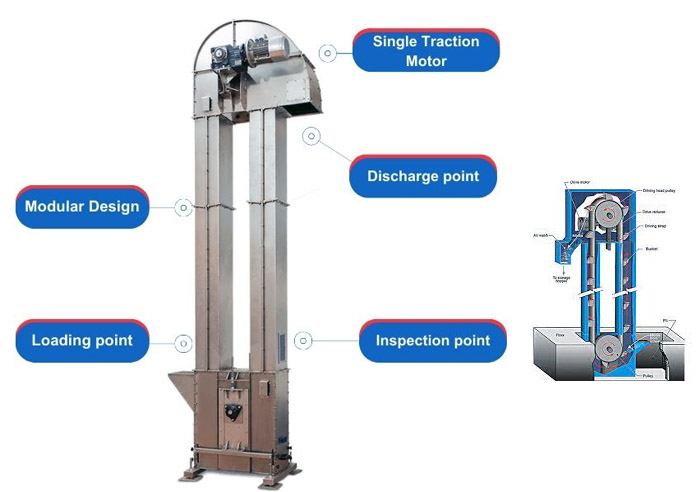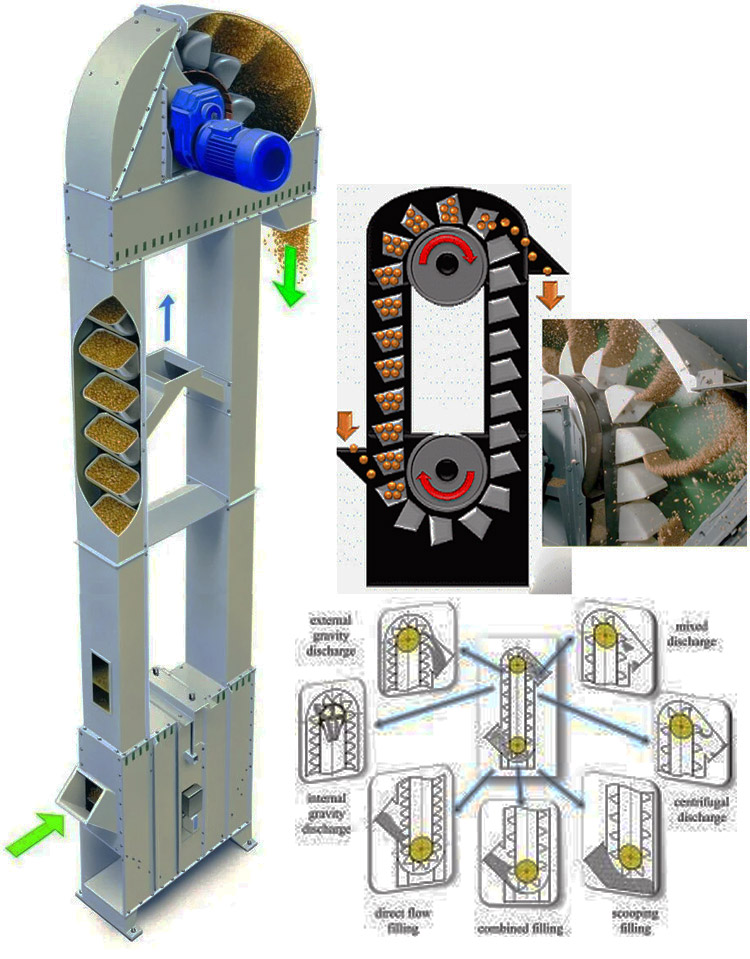How does the vertical bucket elevator work?
Wednesday March-19 2025 15:51:34
A vertical bucket elevator is a mechanical device used to move bulk materials vertically. It is widely used in industries such as agriculture, mining, and manufacturing. Here's how it works:
Working Principle of a Vertical Bucket Elevator
Structure and Components
Buckets: Attached to a belt or chain, these containers carry the material.
Belt/Chain: Drives the buckets in a continuous loop.
Drive Unit: Provides power to move the belt/chain.
Inlet (Boot): Where material is fed into the elevator.
Outlet (Head): Where material is discharged.
Casing: Encloses the system for safety and to prevent material spillage.

Operation Process
Loading: Material is fed into the elevator through the inlet at the bottom. The buckets scoop up the material as they move upward.
Lifting: The belt/chain carries the filled buckets vertically to the top.
Discharging: At the top, the buckets tip over (centrifugal or gravity discharge), and the material is ejected through the outlet.
Returning: The empty buckets travel back down to the bottom to repeat the cycle.

Key Features
High Efficiency: Capable of lifting large volumes of material quickly.
Compact Design: Saves space by moving materials vertically.
Versatility: Can handle various materials, such as grains, powders, and aggregates.
Durability: Designed to withstand heavy-duty industrial use.
Applications
Agriculture: Transporting grains, seeds, and fertilizers.
Mining: Moving ores and minerals.
Manufacturing: Handling raw materials like cement or chemicals.
In summary, a vertical bucket elevator works by using buckets attached to a rotating belt or chain to lift materials vertically, offering an efficient and reliable solution for bulk material handling.
